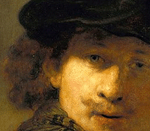
"The Appearance of Christ to Mary Magdalene"
Alexander Ivanov (1806-1858) emerged during a time when Romanticism profoundly influenced Russian art. This movement emphasized emotion, individualism, and the sublime in nature. Ivanov’s works reflect these ideals, showcasing a deep emotional resonance and a focus on spiritual themes. His approach to painting often involved dramatic contrasts and a vivid portrayal of human experiences, aligning with Romantic principles.
Religious themes held a central place in 19th-century Russian art. Artists like Ivanov sought to convey profound spiritual truths through their work. The Appearance of Christ to Mary Magdalene exemplifies this trend, as it explores the moment of Christ’s resurrection, a pivotal event in Christian theology. This painting not only reflects Ivanov’s personal faith but also resonates with the broader cultural and spiritual landscape of Russia during this period.
Ivanov’s use of color and light in The Appearance of Christ to Mary Magdalene is striking. He employs a warm palette dominated by golden hues, symbolizing divinity and hope. The interplay of light and shadow creates a sense of depth, drawing the viewer’s eye to the central figures. This technique enhances the emotional impact of the scene, inviting contemplation of the spiritual significance of the moment.
Ivanov’s brushwork is meticulous yet expressive. He uses fine, delicate strokes to render the figures, capturing their emotional states. The fluidity of the brushwork conveys movement, particularly in the flowing garments of Mary Magdalene. This technique adds a dynamic quality to the painting, emphasizing the transformative nature of the encounter between Christ and Mary.
The composition of the painting is carefully arranged to highlight the interaction between Christ and Mary Magdalene. Christ stands in a commanding pose, radiating authority and compassion. In contrast, Mary Magdalene’s posture reflects awe and reverence. This spatial relationship underscores the significance of their encounter, illustrating the moment of recognition and the profound emotional connection between them.